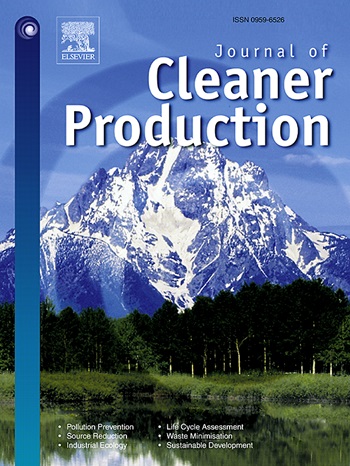Identification of ecological conservation priority areas considering the dynamic supply‒demand balance of ecosystem services
IF 9.7
1区 环境科学与生态学
Q1 ENGINEERING, ENVIRONMENTAL
引用次数: 0
Abstract
Identifying ecological conservation priority areas is crucial for enhancing ecosystem stability, ensuring regional ecological security and sustainable development. However, most traditional studies either fail to incorporate ecosystem service flows or lack a systematic model that captures the entire process of ecosystem service supply, transmission, and response. This limitation reduces the spatial accuracy of identification and weakens the coordination of ecological functions. Therefore, taking the middle reaches of the Yangtze River as a case, this study constructs a dynamic supply‒demand balance framework on the basis of service flows. By integrating a process‒oriented flow allocation model and a coupled coordination model, the framework evaluates the dynamic supply‒demand relationship and establishes a comprehensive importance index for ecological protection, combining service supply capacity, supply‒demand matching, and coordination level. Priority areas are identified under different scenarios, and their scientific validity and applicability are verified through cost‒benefit ratio analysis. The results revealed that: (1) flood regulation services are dominated by inter‒city flows, with 72.58 % of paths and 75.71 % of volume, while outdoor recreation and thermal environment regulation services mainly flow within cities, with paths reaching 89.45 % and 97.63 % and flows 93.14 % and 98.9 %. Except for thermal environment regulation service, capital cities show demand spillovers. Additionally, all services display a supply pattern characterized by high values in peripheral regions and low values in central areas. (2) Under the dynamic perspective, the above‒mentioned demand spillovers help narrow spatial supply‒demand gaps and mitigate mismatch levels. Nevertheless, imbalances remain pronounced: flood regulation exhibits the highest mismatch at 83.30 %, followed by thermal regulation at 76.70 %, and recreation at 34.27 %. (3) Under the dynamic supply‒demand balance scenario, 46.81 % of priority areas are green space and 3.56 % blue, covering key ecological areas such as Wuyi and Nanling mountains and Poyang and Dongting lakes. The proposed method integrates spatial flow analysis with supply‒demand matching, correcting approximately 17.78 % of ecological protection priority area delineations and thereby achieving the most favorable cost‒benefit trade‒off. By quantifying mismatches and explicitly identifying responsible entities for ecological protection, the approach enhances the operational feasibility of ecological space planning. It also provides a scalable toolset for implementing adaptive, region‒specific coordination strategies under the broader context of integrated regional development.
考虑生态系统服务动态供需平衡的生态保护优先区域的确定
确定生态保护重点区域,对于增强生态系统稳定性、保障区域生态安全和可持续发展具有重要意义。然而,大多数传统研究要么未能纳入生态系统服务流,要么缺乏捕捉生态系统服务提供、传递和响应全过程的系统模型。这种限制降低了识别的空间准确性,削弱了生态功能的协调性。因此,本文以长江中游为例,构建了基于服务流的动态供需平衡框架。该框架通过整合面向过程的流量配置模型和耦合协调模型,综合服务供给能力、供需匹配和协调水平,评价动态供需关系,建立生态保护综合重要性指数。在不同情景下确定优先区域,并通过成本效益比分析验证其科学有效性和适用性。结果表明:①城市防洪服务以城际流量为主,路径占72.58%,体量占75.71%;室外游憩和热环境调节服务以城市内部流量为主,路径占89.45%,体量占97.63%,流量占93.14%,体量占98.9%;除热环境调控服务外,首都城市均存在需求溢出。此外,所有服务都呈现出外围地区价值高、中心地区价值低的供给格局。(2)在动态视角下,上述需求溢出有助于缩小空间供需缺口,缓解错配水平。然而,不平衡仍然很明显:洪水调节表现出最高的不匹配,为83.30%,其次是热调节,为76.70%,休闲活动为34.27%。(3)在动态供需平衡情景下,绿地占46.81%,蓝色占3.56%,覆盖武夷山、南岭、鄱阳湖、洞庭湖等重点生态区域。该方法将空间流分析与供需匹配相结合,修正了约17.78%的生态保护重点圈定,实现了最优的成本效益权衡。该方法通过量化错配,明确生态保护责任主体,提高生态空间规划的操作可行性。它还为在更广泛的区域综合发展背景下实施适应性区域协调战略提供了一套可扩展的工具。
本文章由计算机程序翻译,如有差异,请以英文原文为准。
求助全文
约1分钟内获得全文
求助全文
来源期刊

Journal of Cleaner Production
环境科学-工程:环境
CiteScore
20.40
自引率
9.00%
发文量
4720
审稿时长
111 days
期刊介绍:
The Journal of Cleaner Production is an international, transdisciplinary journal that addresses and discusses theoretical and practical Cleaner Production, Environmental, and Sustainability issues. It aims to help societies become more sustainable by focusing on the concept of 'Cleaner Production', which aims at preventing waste production and increasing efficiencies in energy, water, resources, and human capital use. The journal serves as a platform for corporations, governments, education institutions, regions, and societies to engage in discussions and research related to Cleaner Production, environmental, and sustainability practices.
 求助内容:
求助内容: 应助结果提醒方式:
应助结果提醒方式:


